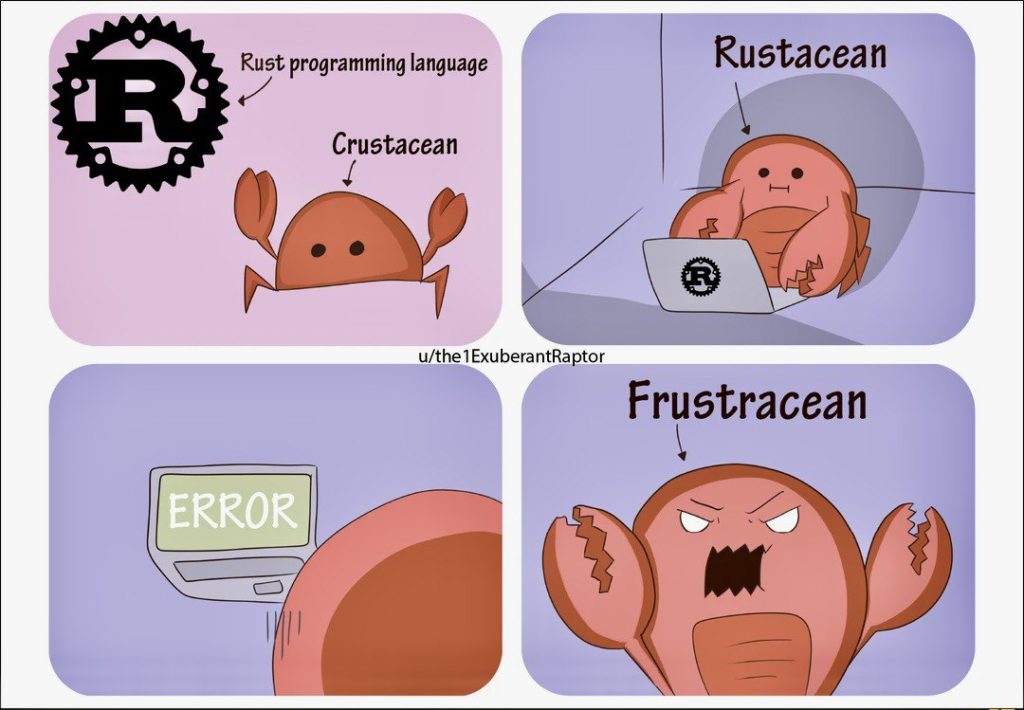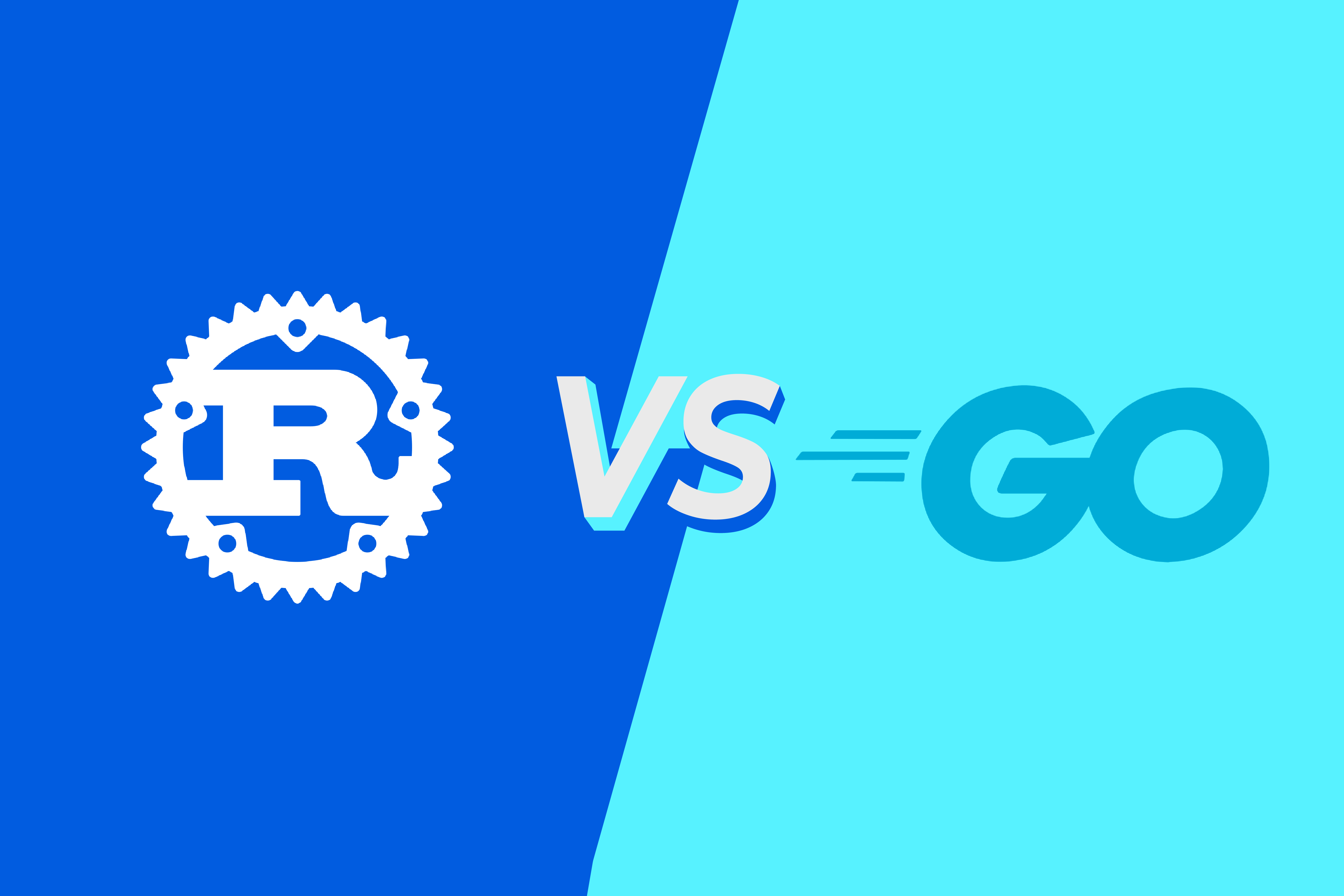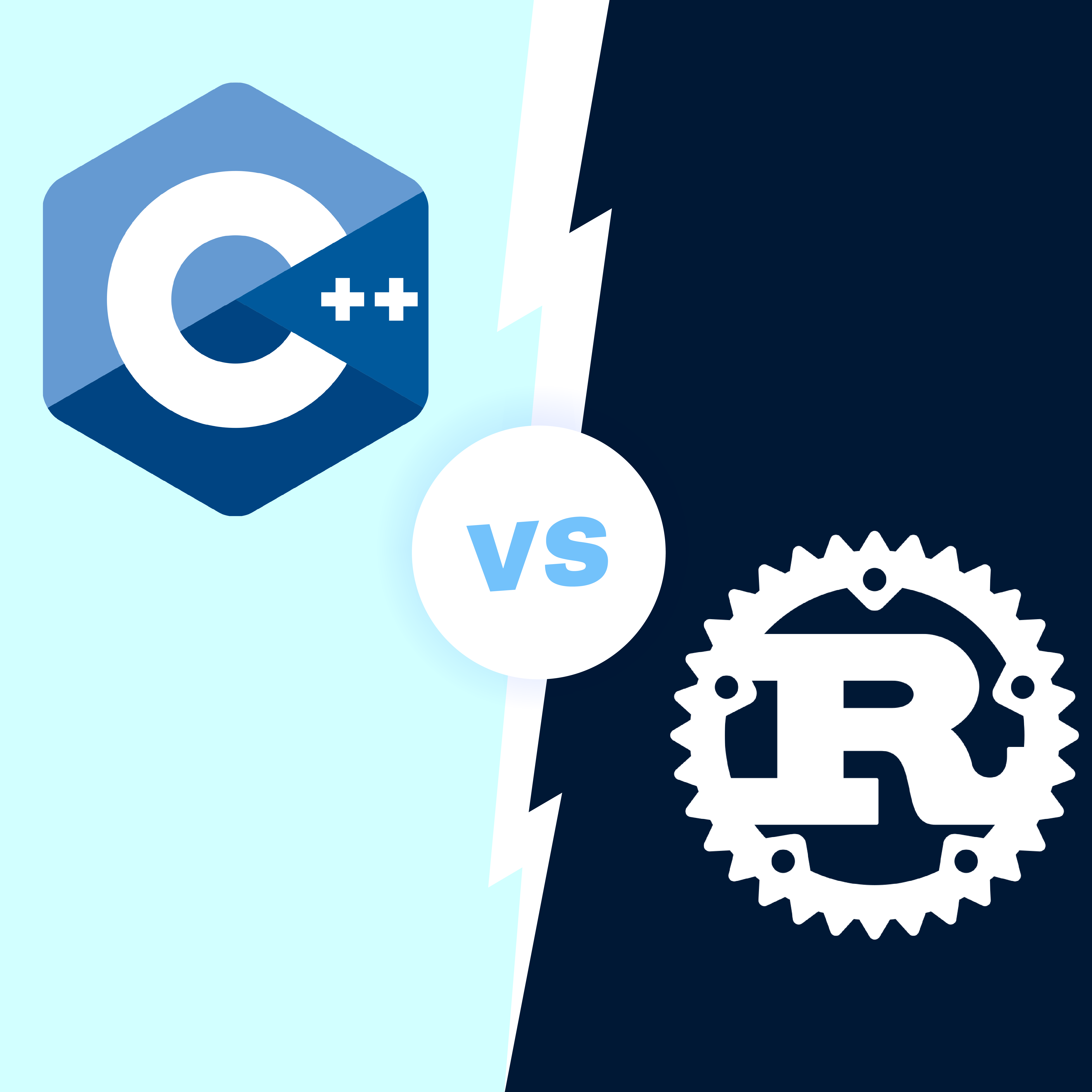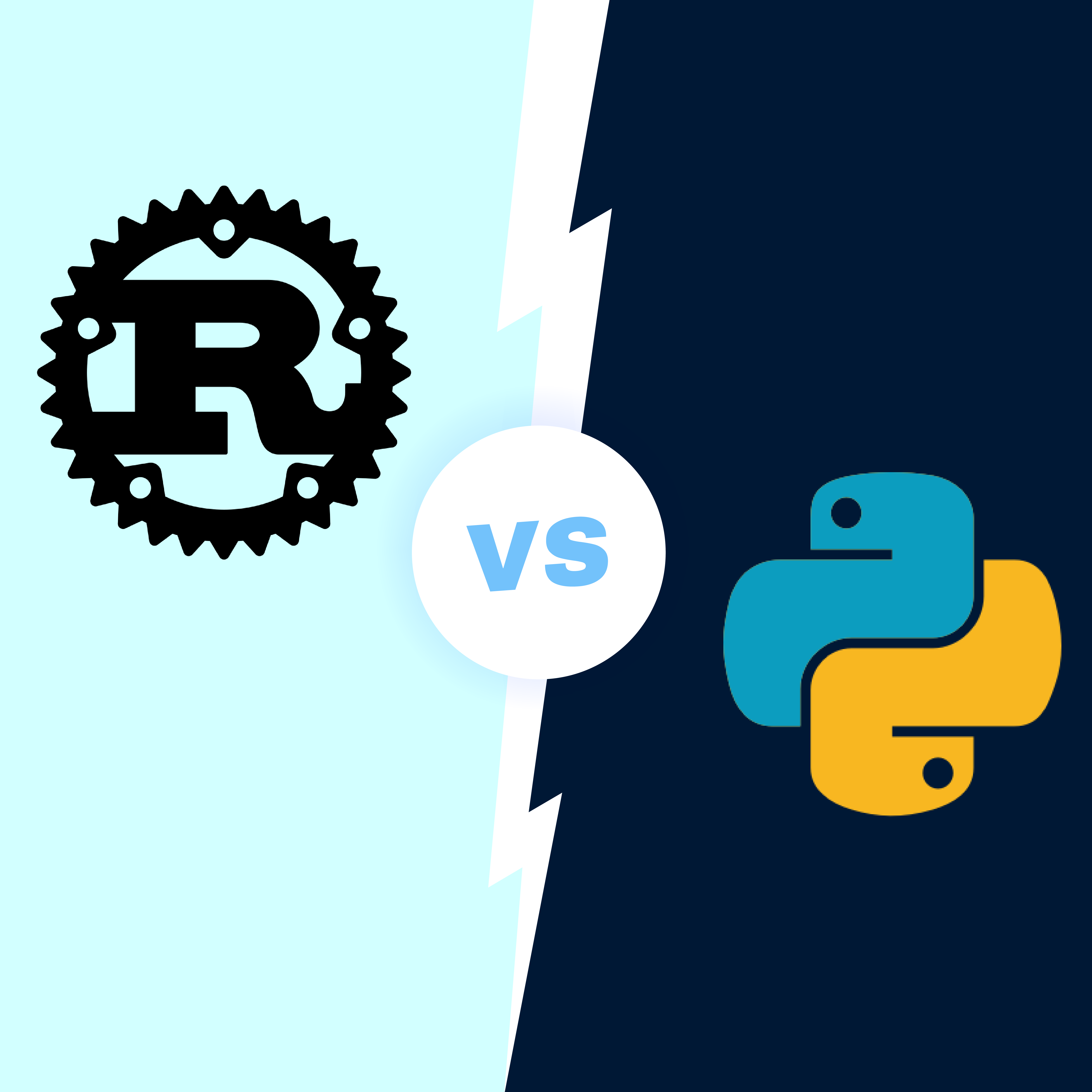When it comes to long-term projects, we frequently choose the Rust programming language. We appreciate the language’s safety and robustness, as well as the ability to write high-performance, secure, bug-free code, and memory management.
These features, combined with the openness and collaborative nature of the rapidly evolving Rust ecosystem truly establish Rust as a programming language with assured futures.
But how is Rust different from other effective and potent languages? Let’s find out together.
What is the Rust Programming Language?
Rust is a high-performance, statically typed, multi-paradigm programming language. With the main focus on safety and performance. This language helps developers create robust and secure applications. Compared to C/C++, which struggles with memory errors and developing concurrent programs, Rust has already solved these problems.
It was actually created to solve C/C++ problems, but it worked so well that now the Rust language is utilized by many leading organizations, including Dropbox, Firefox, Cloudflare, and many others, both startups and big companies.
Hundreds of companies around the world choose Rust since it has numerous benefits. It’s fast and memory-efficient. Using no runtime or garbage collector, the language can conduct different performance services, integrate with other languages, and run on embedded devices.
With a rich type system and ownership model, the Rust language allows getting rid of many bugs at compile time. It also has extensive and useful documentation: an integrated package manager, multi-editor support with type inspections, and auto-completion.
Core Features
So far, we can see that Rust has many general benefits that make it a programming language of choice for many businesses. Now, let’s explore the core features that define Rust’s performance:
Data-Races-Free Threads
When two or more threads access the exact memory location, it’s called a data race. Rust allows having threads without data races. Thus, two threads never own the same variable, which enforces their safe usage.
Error Messages
The Rust language goes a step further and improves error messages. Compared to GCC (GNU Compiler Collection), this language displays error messages with formatting and colors and correct misspellings, thus enhancing clarity.
Move Semantics
One of Rust’s features is move semantics. It’s possible to replace a copy operation with the move operation easily. The language moves by default. It copies the bytes to the new location; then, the old object doesn’t exist anymore.
Zero-Cost Abstraction
There is no extra runtime overhead in Rust. Simply put, whether you use the “manual” implementation or the abstraction, the cost will be the same. Besides, adding abstractions will not affect the runtime performance of the Rust code. On the contrary, it improves the quality and readability of the code.
Pattern Matching
Pattern matching is a specific technique that helps find certain characteristics in a tested “match” expression. The Rust language offers this feature and gives more control over the program’s flow. Among the combinations of patterns are literals, variables, placeholders, arrays, enums, or structs.
Memory Safety
By using the concept of ownership, Rust ensures memory safety. In short, ownership is something in the middle between the memory controller and the garbage collection. The language allows variables to borrow memory space from other variables. It guarantees memory safety without lying too much on the garbage collector. Rust allows saving up to 50 MiB.
Safe Memory Allocation
Contrary to the C language, Rust has manual memory management. A programmer controls where and when to allocate memory. With just a single operator, Rust uses smart pointers (abstract data type) to track the location of an object and clean it up.
Less Development Time
Rust has been created to minimize time spent on developing software. Since it doesn’t require a programmer to be buried with lots of details, which slows down the process, the language strives to be abstractions-free to make the development easier and faster.
Effective C Bindings
Bindings to C libraries mean that the Rust programming language can interoperate with the C language. It allows the language to reach out to the C APIs, thus improving its ownership system and guaranteeing memory safety.
Borrow Checker and Why it Matters
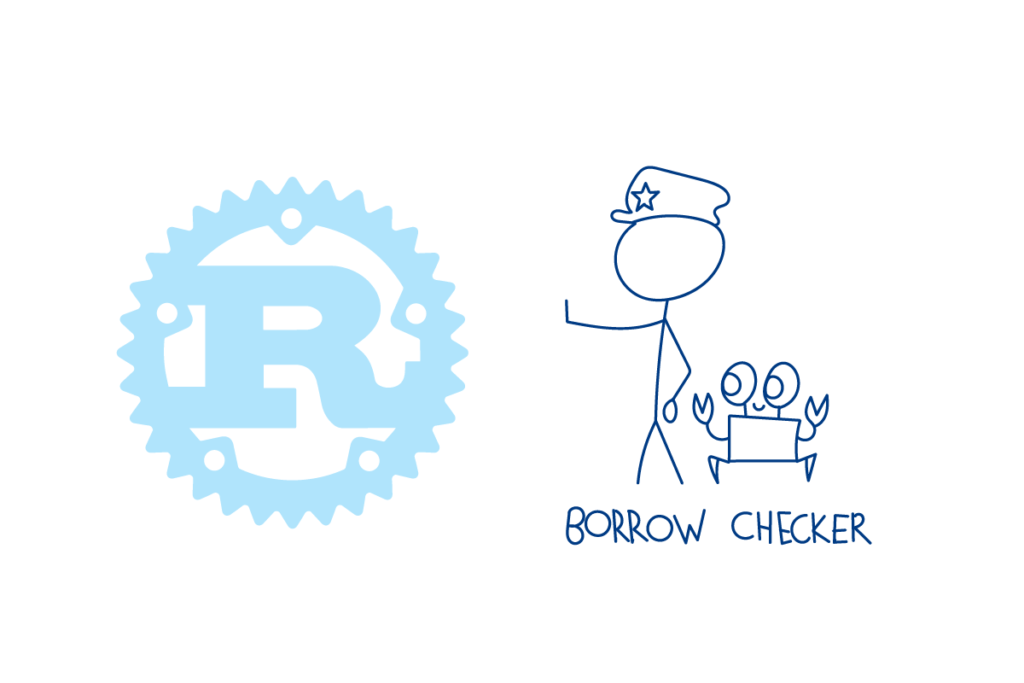
The borrow checker is a vital feature of the Rust programming language, and it’s one of the things that makes Rust Rust. It assists you in managing ownership. Ownership is another of Rust’s unique features. It enables the language to establish memory safety with no need for a garbage collector.
First things first, what does the borrow checker do for us, and how does it compare to other memory management methods, such as garbage collectors and ownership? Let’s break it down since there’s a lot to unfold there.
So What’s the Borrow Checker?
In most programming languages, you don’t have to think about where your variables are stored since the garbage collector takes care of that. But in Rust programming, all of it’s made by the borrow checker. Rust has no defined memory model, but there are two types of memory in which apps can store values: the stack and the heap. When the data is saved on the stack, it has to have a definite size, while when it’s saved on the heap, it can be any size.
One then stack, the access to data is easy and fast, but the data has to fit specific standards. The exact process on the heap is slower but more versatile since there are no specific requirements for the data. It’s beneficial when the stack is unavailable.
In garbage-collected language, you don’t need to worry about where the data goes: the stack or the heap. In C languages, you have to allocate memory manually to the heap. Remember that memory needs to be freed once you’ve finished eschewing memory leaks, but you must do it only once.
What are the Disadvantages of the Borrow Checker?
However, manual allocation causes errors. Microsoft states that 70% of its vulnerabilities and exploits are memory-related. But anyway, manual memory management ensures better performance and more control than garbage collection. It’s because the program doesn’t stop to determine what needs to be cleared.
The rust ownership model allows the borrow checker to determine where the data needs to be freed and, at the same time, keep track of where it’s used throughout the program. Then, you’ll free up the memory that is detected by the tech.
In addition, the borrow checker may be truly difficult to work with for newcomers to the Rust community. Many new developers may lose hours before they understand how to use this feature and write their first lines of Rust code.
For example, Rust developers may face a problem while trying to share data, especially if it’s necessary to mutate it. Also, sometimes the creation of certain data structures may be harder in Rust than in other programming languages.
Luckily, it’s possible to overcome these issues as soon as a developer gets more Rust experience. Plus, there is a big and friendly Rust community supported by the Rust Foundation. You can also find many other developers on Reddit or GitHub to ask them for help or share your Rust projects.
What is Rust Used For?
It’s time to learn what we can build with the Rust programming language. Well, it can be used in programming. First, the language is great for writing operating systems and microcontroller apps. Many robust operation systems have already been built with Rust, including QuiltOS, Rux, Redox, and intermezzOS. Besides, Mozilla uses the language in its browser engine. In general, the Rust language can be used to build the following software:
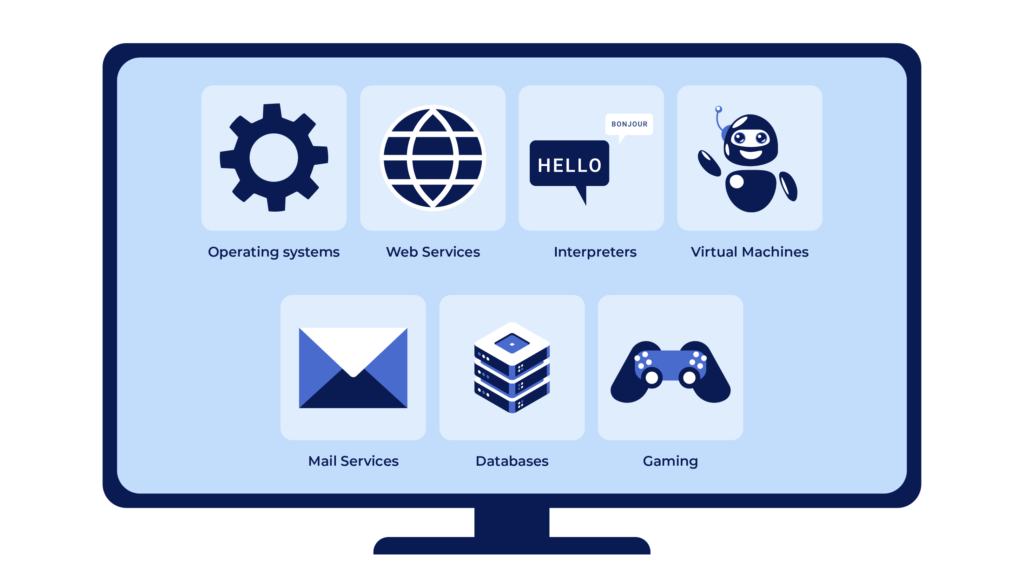
Many developers use Rust to deal with various tasks due to the benefits this programming language offers. The most attractive advantages are:
- High efficiency. Rust assists developers by ensuring a faster coding process.
- Advanced memory management. Rust prevents any bugs or memory issues due to the analysis of the app’s memory compilation at build time.
- Uniqueness. Rust can easily interact with other coding languages as well as accelerate the production services run on embedded devices.
- Variety of Rust libraries. IT experts can discover a lot of development tools that may significantly boost the efficiency of this coding language. These libraries and crates provide the possibility to build innovative web services and apps from scratch.
Additionally, it’s possible to manage multiple Rust installations in the same operating system thanks to such tools as Rustup. Thus, developers can use different versions of this coding language for various web development processes.
Why Do Businesses Use Rust?
If you are concerned about memory security, Rust is a perfect choice for you. Nevertheless, many started using it after they got sick and tired of Python, Go, C, and C++ languages and their limitations. While creating the Rust programming language, engineers focused on building an ecosystem with an efficient workflow.
Here are the primary reasons why the companies choose Rust over other programming languages:
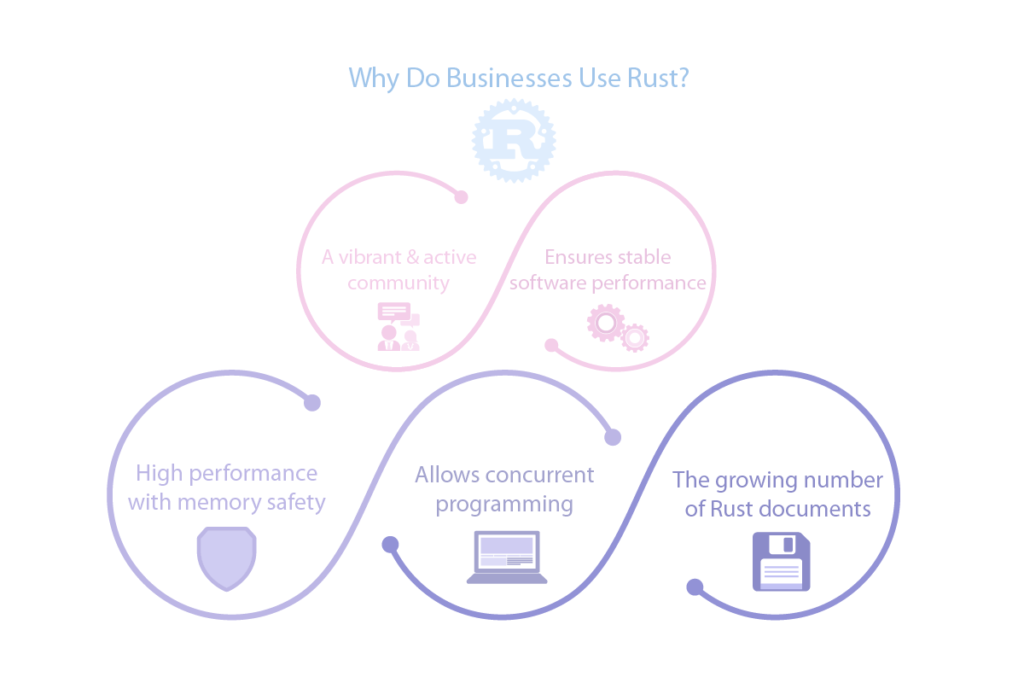
This programming language is often used to create powerful apps. Many developers opt for Rust due to the possibility of avoiding a variety of memory and performance issues. The most exciting examples of apps developed or improved using this programming language include:
- Figma. This online design platform is extremely popular with web designers. With the growth of Figma’s audience, its developers updated the multiplayer synchronization engine from Typescript to Rust to ensure better server performance.
- Meta. Although this social media was originally written in Python, its source control backend was later rewritten in Rust.
- Discord. The majority of Discord’s codebase is written in Rust. It ensures flawless work on both the client and server sides of the app.
Additionally, Rust is used by top companies such as Microsoft Corporation, Amazon, Mozilla Corporation, and Coursera. Significant advantages and possibilities make Rust one of the 10 highest-paying coding languages worldwide. Besides, it has already become popular with the developers of machine learning and data science apps.
Wrapping Up
Whatever programming language you’re currently into, there’s bound to be something about Rust that excites or intrigues you. Adding it to the collection of functional programming languages may provide any developer with a chance to join innovative and exciting projects. In 2024, IT industry experts expect to see new operating systems, game engines, and other software projects developed with the help of Rust.
These are just a few reasons why many adore Rust, and there are many more. If you want more structure in your project, faster or more efficient code, or the ability to write performant code more quickly and safely, it’s time to see if Rust will be your next favorite language!
And if you’re looking for Rust experts for your next fantastic project, reach LITSLINK — a leading software outsourcing company in the USA!

